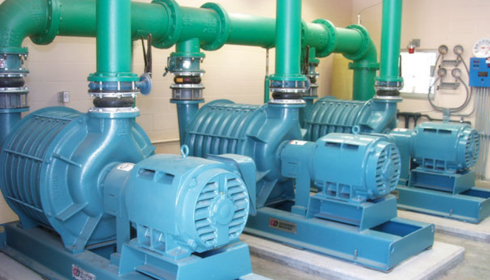Clean water feels so ordinary that we often forget what a miracle it is. You turn on a tap, and there it is — clear, cool, and dependable. But behind that simple action lies an intricate web of systems, sensors, and science working together to ensure safety and sustainability. The way cities handle, treat, and reuse water is changing rapidly, driven by both necessity and innovation. From smarter municipal water solutions to advanced filtration and pre-treatment technologies, the world of water management is becoming one of the quiet heroes of modern infrastructure.
The Complex Dance of Water Systems
Cities today face an uphill battle. Populations grow, infrastructure ages, and climate unpredictability keeps everyone guessing. Many towns still rely on outdated piping systems, while newer developments try to balance sustainability with cost efficiency. The problem isn’t just about water scarcity — it’s also about water quality, energy use, and long-term resilience.
Engineers and urban planners now look at water management as a circular process rather than a one-way pipeline. Instead of pulling from natural sources endlessly, the goal is to reuse, recycle, and reclaim wherever possible. Every drop counts. And as the demand for reliability grows, so does the need for smarter monitoring, automation, and data-driven operations.
The Shift Toward Smarter Municipal Infrastructure
If you’ve ever seen a water treatment facility up close, it’s like watching a living organism — pumps, filters, and sensors working in perfect synchronization. But today’s systems are taking it further, incorporating AI and IoT-based controls that detect leaks, adjust flow rates, and even predict equipment failures before they happen.
These municipal water solutions aren’t just about technology; they’re about foresight. Municipalities can no longer afford to be reactive. They’re embracing predictive maintenance, cloud-based monitoring dashboards, and modular treatment systems that can scale with population growth. The result? Fewer disruptions, cleaner water, and reduced energy costs.
In many ways, smart water networks are becoming the digital nervous system of modern cities. They offer visibility where none existed before and give operators the power to manage vast systems in real time. It’s not flashy, but it’s transformative.
When Wastewater Becomes a Resource
One of the most significant paradigm shifts happening now is how we view waste. The phrase “out of sight, out of mind” no longer works when it comes to what flows down the drain. In the past, wastewater was simply something to get rid of — a by-product of civilization. But modern wastewater treatment turns that idea on its head.
With advanced biological and chemical processes, wastewater plants are now recovering valuable resources from what was once considered useless. Clean water, biogas for energy, and even nutrients like phosphorus are being reclaimed and reused. It’s not only an environmental win but also an economic one. Cities are discovering that what was once a cost burden can become a revenue stream.
The rise of decentralized wastewater systems — smaller, localized treatment setups for specific districts or industries — adds another layer of resilience. These modular plants reduce pressure on main treatment facilities and improve overall efficiency, especially in fast-growing or remote regions.
The Unsung Role of Lift Stations and Pre-Treatment
Not every part of a city’s water network gets the spotlight. Take lift stations, for example — those unassuming facilities that help wastewater travel uphill when gravity can’t do the job. They’re essential for keeping everything flowing smoothly, yet often overlooked until something goes wrong.
That’s where lift station pre-treatment systems come into play. By filtering, separating grease, and reducing solid build-up before the wastewater enters the main treatment process, they prevent blockages and pump failures. It’s a proactive approach that saves both time and money while extending equipment lifespan.
In industrial areas, where waste composition can vary drastically, pre-treatment is even more critical. Without it, harmful substances could compromise downstream systems or even violate environmental regulations. In essence, pre-treatment serves as the gatekeeper — protecting the integrity of the entire network.
Sustainability: More Than a Buzzword
The best part of all these innovations is that they’re not just technical — they’re ethical. Sustainability has moved from corporate brochures into the blueprint of real infrastructure. Whether through solar-powered pumps, green roofs that absorb stormwater, or real-time data analytics, every improvement contributes to a more balanced ecosystem.
Cities are beginning to think of themselves as water stewards rather than consumers. There’s a growing understanding that sustainability isn’t just about doing less harm; it’s about designing systems that heal and regenerate. That shift in mindset could be one of the most powerful tools we have for the decades ahead.
Looking Ahead: Collaboration and Community
Technology alone can’t solve the water crisis. It requires collaboration — between municipalities, engineers, private companies, and citizens. Community engagement is becoming an integral part of water programs, as people start to appreciate where their water comes from and where it goes.
Many cities are adopting open-data platforms, letting residents track water quality in real time or report leaks directly through mobile apps. When citizens become part of the system rather than just users, accountability and care naturally increase.
It’s this human element — the sense of shared responsibility — that makes the future of water management so hopeful.
A Quiet Revolution Beneath Our Feet
It’s easy to overlook the systems that keep our lives running. The pipes, pumps, and treatment plants may not be glamorous, but they’re the foundation of civilization. Every innovation in water management — every upgrade, every smarter sensor — helps ensure that clean, safe water continues to flow long after we’re gone.
The future of water is quiet, efficient, and sustainable. And while we may never notice its hum beneath our cities, its impact will ripple through generations — clear as the water it delivers.

